The American Saddlebred is a truly versatile and captivating breed known for its elegant appearance, distinctive gaits, and engaging personality. As one delves into the history and development of this remarkable horse, it becomes evident that the American Saddlebred has played a significant role in shaping the equestrian landscape in the United States. This breed’s fascinating journey has indeed influenced the art and sport of horse riding, and through dedication and passion, enthusiasts continue to contribute to its enduring legacy.
Table of Contents (Horspedia)
History and Origins of American Saddlebred
The American Saddlebred, often referred to as the “Horse America Made,” has a rich and storied history. The breed initially developed in the southern United States during the 1700s, with early influences coming from the Thoroughbred, Morgan, and Narragansett Pacer horse breeds. As settlers moved westward and equestrian demands diversified, selective breeding further shaped the strong, versatile, and elegant animal that is now known as the American Saddlebred.
Throughout the 18th and 19th centuries, American Saddlebred horses played a significant role in the nation’s development, including its role in the transportation of both people and goods. These horses were not only admired for their smooth, comfortable gaits but also for their stamina and ability to adapt to various types of terrain. During the Civil War, Saddlebreds became the mount of choice for many Union and Confederate generals, showcasing their intelligence, agility, and courage on the battlefield.
The late 1800s saw the rise of horse shows and exhibitions in the United States, where the American Saddlebred quickly garnered widespread attention for its flashy, high-stepping gaits, elegance, and versatility in various disciplines. These qualities, along with their impressive presence, turned the breed into a popular choice for show and performance horses, securing their position among America’s most prized equine breeds.
In the early 1890s, the American Saddle Horse Breeders’ Association was established to create breed standards and maintain a registry for these horses. The association, later renamed the American Saddlebred Horse Association (ASHA), was instrumental in promoting the breed to the broader equestrian community and in documenting its ancestry and bloodlines. Over time, breeders honed the Saddlebred’s characteristics, placing emphasis on their high head carriage, natural athleticism, and the signature gaits – the slow gait and the rack, both of which propelled the breed to become the premier American show horse.
Today, the American Saddlebred serves as a symbol of the nation’s heritage and a testament to centuries of equine evolution. This breed excels in various disciplines, from the traditional three- and five-gaited show classes to competitive dressage, jumping, and endurance riding. The ongoing commitment to preserving and celebrating the American Saddlebred’s iconic qualities demonstrates the deep respect and admiration that the breed has earned throughout its storied history.
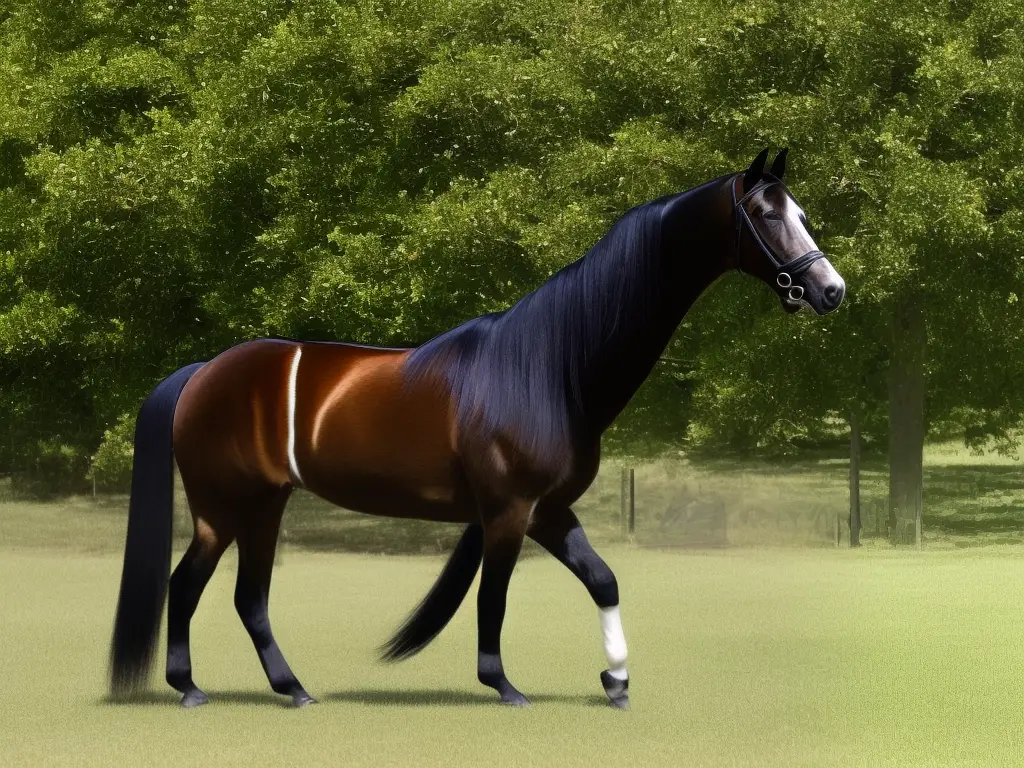
Breed Characteristics and Conformation
The captivating American Saddlebred is known for its striking appearance and versatile abilities. These horses possess a strong, well-proportioned body, and an elegant long neck that gracefully holds their head high. Additionally, the long and sloping shoulders of an American Saddlebred enable extended reach and fluid action in their gaits. A distinctive characteristic of this breed is their ability to perform both three and five-gaited styles, which makes them highly sought after by show riders. By understanding and appreciating the qualities that make the American Saddlebred stand out, enthusiasts and hobbyists can develop a deeper connection with this remarkable breed.
The conformation standard of the American Saddlebred outlines the desired physical traits and proportions that reflect the breed’s grace and athleticism while prioritizing the horse’s soundness and ability to perform. Key aspects of the conformation include a short back, strong coupling, well-sprung ribs, and a deep and well-rounded chest. The legs of an American Saddlebred should be straight, correctly set, and sound with strong joints and ample bone density. The horse’s refined head should display a straight profile with large, expressive eyes, and the ears should be well-shaped and carried alertly.
When it comes to the unique gaits of the American Saddlebred, the breed is capable of both natural and man-made techniques. The three-gaited style includes the walk, trot, and canter, while the five-gaited style adds the slow gait and the rack. The slow gait is a four-beat gait that features high action and extensive use of the forelegs, and the rack is a fast, flashy, and smooth four-beat gait with each foot meeting the ground independently. These impressive gaits showcase the breed’s natural power, agility, and grace.
As for the American Saddlebred’s coat colors and patterns, the breed boasts a wide range of hues and variations. Most commonly, these horses can be found in colors such as chestnut, bay, and black. However, they may also display more unique shades, such as palomino, grey, and pinto, with varying degrees of white markings on the body or small spots known as Bend Or spots. The wide range of coat colors and markings within the breed adds to its aesthetic appeal, as each horse can appear remarkably distinct from one another.
Learning about the American Saddlebred begins with understanding the breed’s distinct physical characteristics, such as its conformation standards and unique gaits. This captivating equine breed showcases an array of beautiful coat colors and markings that further add to its visual appeal. For enthusiasts and hobbyists, getting to know the American Saddlebred means delving into the intricate blend of form and function that makes it one of the most versatile and enthralling breeds in the world.
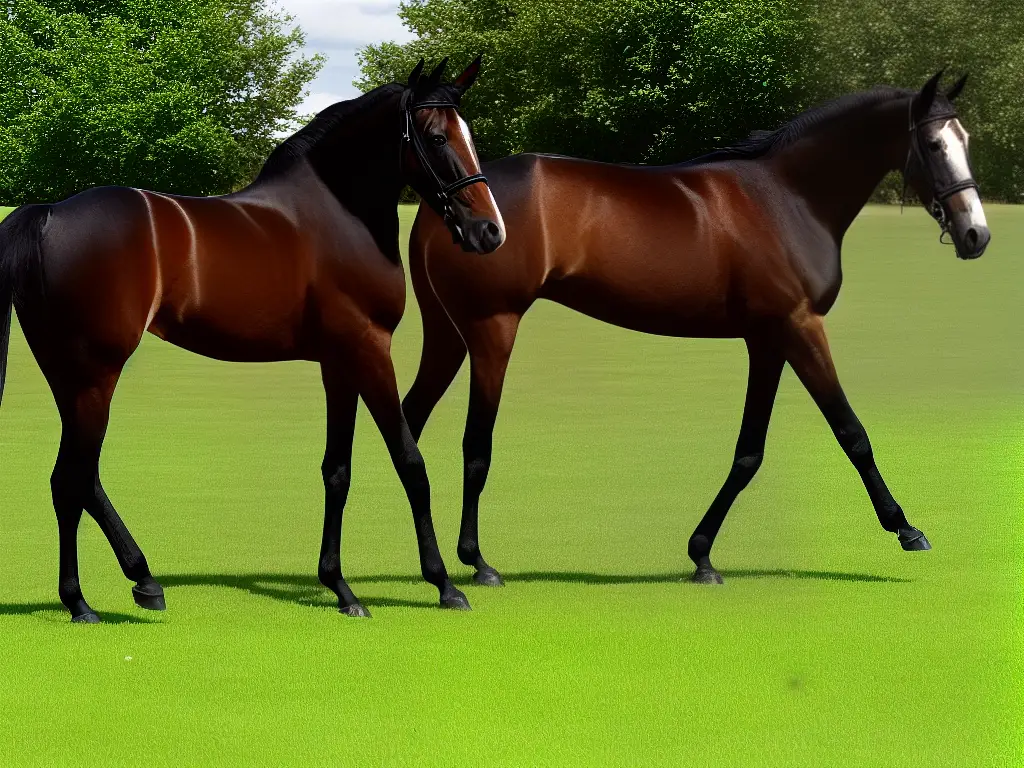
Training Techniques and Riding Styles
When training an American Saddlebred, it’s essential to use a combination of techniques to develop the horse’s unique gaits and athleticism. The process starts with groundwork, teaching a young horse to respond to voice commands and accept guidance from the handler. This groundwork sets the stage for successful lunging exercises, where the horse learns to balance, use its hindquarters effectively, and refine its response to voice and body cues. Lunging is also beneficial as it paves the way for under-saddle work, where the trainer builds on the established communication and focuses on developing the horse’s gaits further.
When it comes to riding styles, saddle seat is the most traditional and widely recognized style for American Saddlebreds. This style of riding showcases the horses’ lofty, expressive gaits and allows the rider to maintain a balanced position that enhances the horse’s natural action. The saddle is positioned farther back on the horse’s back, allowing their shoulders to move freely and helping exaggerate their high-stepping motion. The rider sits deep in the saddle with long stirrups, using minimal leg contact and relying more on weight and seat cues to communicate with the horse.
Another popular riding style for American Saddlebreds is driving, where the horse is hitched to a lightweight cart, known as a buggy, and driven from behind. This discipline showcases the horse’s high-stepping action and powerful movement in a similar way to saddle seat, but without the weight of a rider on their back. Driving training begins on the ground, with the horse being first introduced to the harness and then learning to respond to rein commands while being driven in line or long-lined by the trainer. As the horse becomes more comfortable and responsive, it can then be hitched to a cart.
Dressage, while not as common for American Saddlebreds, is another riding style that can complement and develop their natural athleticism. In dressage, the horse is trained to perform a series of precise movements, displaying balance, suppleness, and obedience to the rider’s cues. The discipline emphasizes rhythm, tempo, and consistent contact between horse and rider, which can translate positively to the saddle seat and driving styles. Additionally, dressage can provide a fresh perspective and give the horse a break from the repetitiveness of other training.
American Saddlebreds are versatile horses, making them ideal for various equestrian disciplines. Many American Saddlebreds are trained in jumping, trail riding, and western pleasure, creating well-rounded horses with diverse skillsets. By incorporating a mix of training techniques and riding styles, trainers can develop confident, expressive, and talented American Saddlebred horses ready for a variety of disciplines and events.
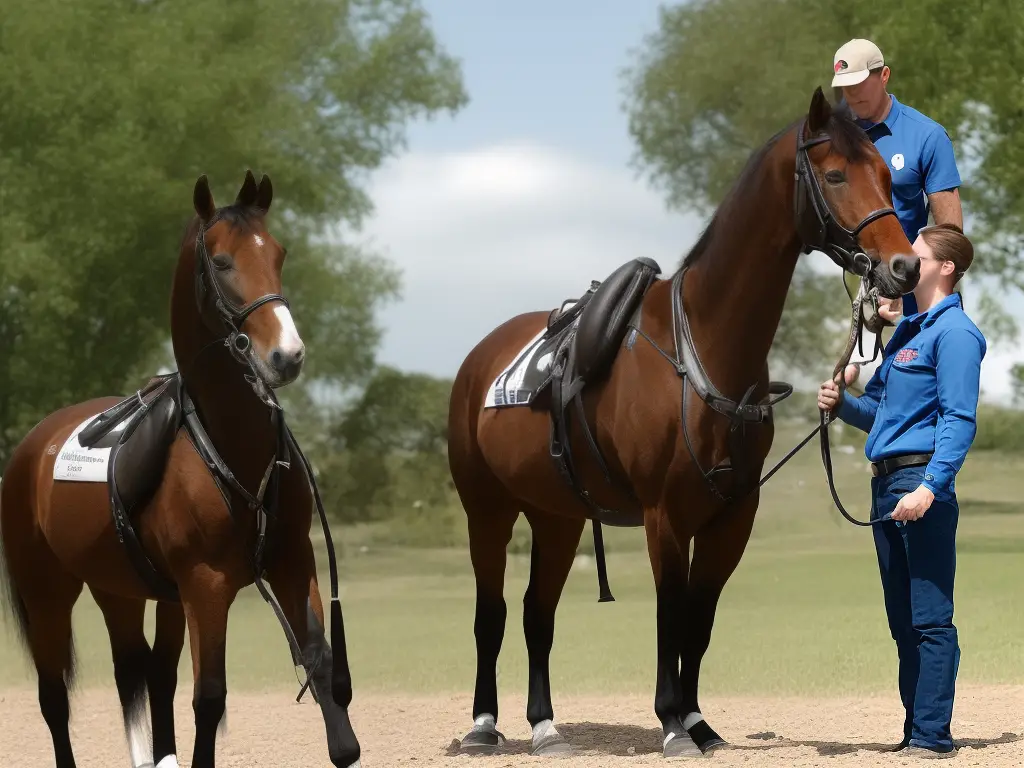
Care and Maintenance
Just as important as their training is the proper care and maintenance of American Saddlebred horses. Regular grooming, balanced nutrition, and necessary medical assessments are essential for the health and happiness of these magnificent animals. By adhering to consistent grooming routines, scheduling regular dental and veterinary check-ups, and ensuring a balanced diet, owners can keep their American Saddlebred horses in peak condition.
Grooming Practices
Consistent grooming routines help improve the horse’s coat, reduce the risk of skin irritation or infections, and allow owners to check for any injuries, parasites, or other issues.
Feeding and Nutrition
Feeding high-quality hay and forage and providing fresh, clean water, is essential for a healthier American Saddlebred. Additionally, concentrated feeds provide essential vitamins, minerals, and energy, and observing their eating habits can help prevent potential health issues.
Hoof Care
Regular trimming and shoeing appointments with a professional farrier keep your horse’s hooves healthy and balanced. Routine hoof cleaning helps prevent infections and can provide insights into the horse’s overall health.
Dental Care
Regular dental check-ups by an equine veterinarian ensure proper dental maintenance and help prevent potential issues related to eating and digestion or while riding.
Veterinary Care
Regular check-ups and vaccinations are crucial in maintaining the health and longevity of American Saddlebreds. Developing a relationship with a trusted veterinarian can help catch potential complications before they become serious problems. A healthy and well-cared-for American Saddlebred will be better prepared to participate in various horse shows and competitions.
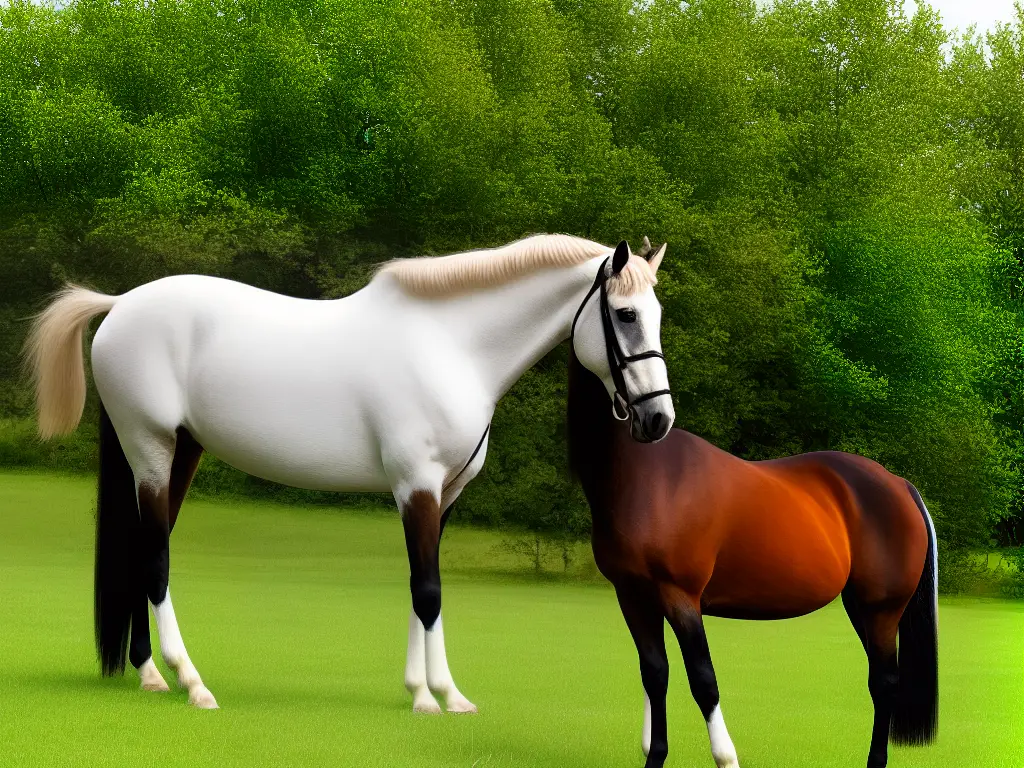
Horse Shows and Competitions
American Saddlebred horses are renowned for their beauty, grace, and athleticism, making them popular choices for enthusiasts and hobbyists who enjoy participating in a range of equestrian events. If you’re looking to become skilled with these elegant and versatile horses, focus on their health and well-being to ensure they reach their full potential in various horse show disciplines.
One of the most prestigious events in which American Saddlebreds participate is the World’s Championship Horse Show, held annually as part of the Kentucky State Fair. This event showcases the best of the breed, with over 2,000 entries competing in various divisions, such as Three-Gaited, Five-Gaited, Fine Harness, and Pleasure. Competitors from across the nation and around the world gather to vie for the highly coveted World’s Grand Champion titles.
While the World’s Championship Horse Show is an exclusive event, there are many other shows and competitions that cater to all levels of riders and horses, from local and regional shows to national competitions. The American Saddlebred Horse Association (ASHA) and the United States Equestrian Federation (USEF) oversee these events, ensuring that the rules and regulations governing them are upheld. Additionally, the competitions are often divided into various sections based on age, experience, and skill level, allowing for an inclusive and diverse competitive environment for all American Saddlebred enthusiasts.
The scoring system for American Saddlebred horse shows typically follows a set of guidelines outlined by the ASHA and USEF. Generally, horses are judged based on their performance, manners, and overall impression, with additional emphasis placed on their conformation, beauty, and elegance. In performance classes, specific gaits are required for each division, with criteria such as cadence, impulsion, and obedience considered by the judges. In pleasure classes, the emphasis is placed on the horse’s manners, smoothness, and overall enjoyment for the rider. Ultimately, the scoring system seeks to reward the horses that best exemplify the breed and showcase their unique abilities and traits.
Preparing your American Saddlebred horse for showing is a multifaceted process that begins with proper training and conditioning. Regular exercise and riding sessions focused on developing the horse’s gaits, balance, and responsiveness are essential in building a competitive foundation. As the horse progresses, it’s important to introduce various show elements, such as patterns and sequences, to help them become accustomed to the show environment. Additionally, working with a skilled trainer who has experience in American Saddlebred show preparation can be extremely beneficial in helping you and your horse reach your full potential.
Preparing for a successful showing experience with an American Saddlebred involves proper grooming and maintenance. Regular bathing and grooming sessions are essential in maintaining your horse’s coat, mane, and tail in show-ready condition. Clipping and trimming should also be done several days before an event to ensure a polished appearance. Ensuring that your tack is clean, well-maintained, and in good working order is vital for the overall impression you’ll make in the show ring as well as the comfort and safety of your horse throughout the competition. With dedication, preparation, and the exceptional qualities that define the American Saddlebred breed, both horse and rider are sure to shine in the show ring.
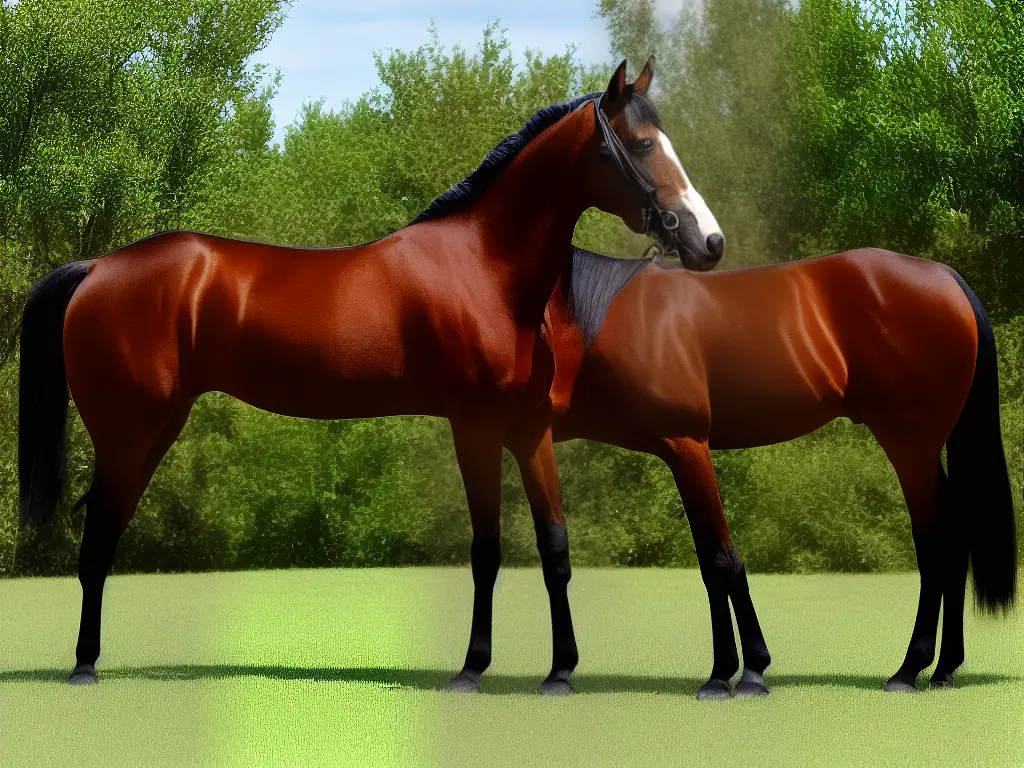
Organizations and Associations
One prominent organization supporting American Saddlebred enthusiasts and hobbyists is the American Saddlebred Horse Association (ASHA). Founded in 1908, ASHA promotes the breeding, exhibiting, use, and improvement of the American Saddlebred horse. The association enhances public understanding and appreciation of these magnificent animals by offering resources and services such as registration and genetic testing, award programs, and youth clubs. ASHA also organizes various events throughout the year, including clinics, seminars, and competitions, which serve to engage the American Saddlebred community and educate those who are interested in becoming more involved with the breed. By participating in such events and being part of the ASHA community, enthusiasts can further develop their skills and knowledge about the American Saddlebred.
Another important organization for the American Saddlebred community is the United Professional Horsemen’s Association (UPHA). Established in 1968, the UPHA is a nonprofit organization that aims to improve the overall experience for trainers, instructors, and horse enthusiasts who participate in the showing of performance horses. The diverse group of professionals who make up the UPHA membership includes trainers, instructors, judges, and show officials who specialize in American Saddlebred horses. Through its code of ethics and ongoing educational programs, UPHA seeks to elevate the standards of horsemanship and equine care within the performance horse industry.
In addition to ASHA and UPHA, regional and local American Saddlebred Associations also play a pivotal role in fostering interest and support for the breed. These regional organizations typically offer programs and activities tailored to their specific geographic areas, such as horse shows, trail rides, clinics, and social events. By joining a local American Saddlebred organization, enthusiasts can network with like-minded individuals, gain access to valuable resources and information, and participate in events that showcase and celebrate the American Saddlebred horse.
For those seeking more opportunities to engage with American Saddlebreds and their enthusiasts, a multitude of horse shows cater specifically to the breed. Events such as the World’s Championship Horse Show, the Lexington Junior League Horse Show, and the American Royal Saddlebred Show are among the many prestigious competitions showcasing the talent and versatility of American Saddlebreds. These events not only offer a platform for the finest horses and riders to compete, but also serve to educate spectators on the unique qualities and capabilities of the American Saddlebred.
As an enthusiast or hobbyist, becoming skilled and knowledgeable about the American Saddlebred breed can be achieved through the vibrant community of American Saddlebred-focused organizations and associations. Offering resources, support, and networking opportunities, groups like the American Saddlebred Horse Association (ASHA) and the United Professional Horsemen’s Association (UPHA) ensure that this remarkable breed’s legacy continues to thrive and captivate future generations of horse lovers.
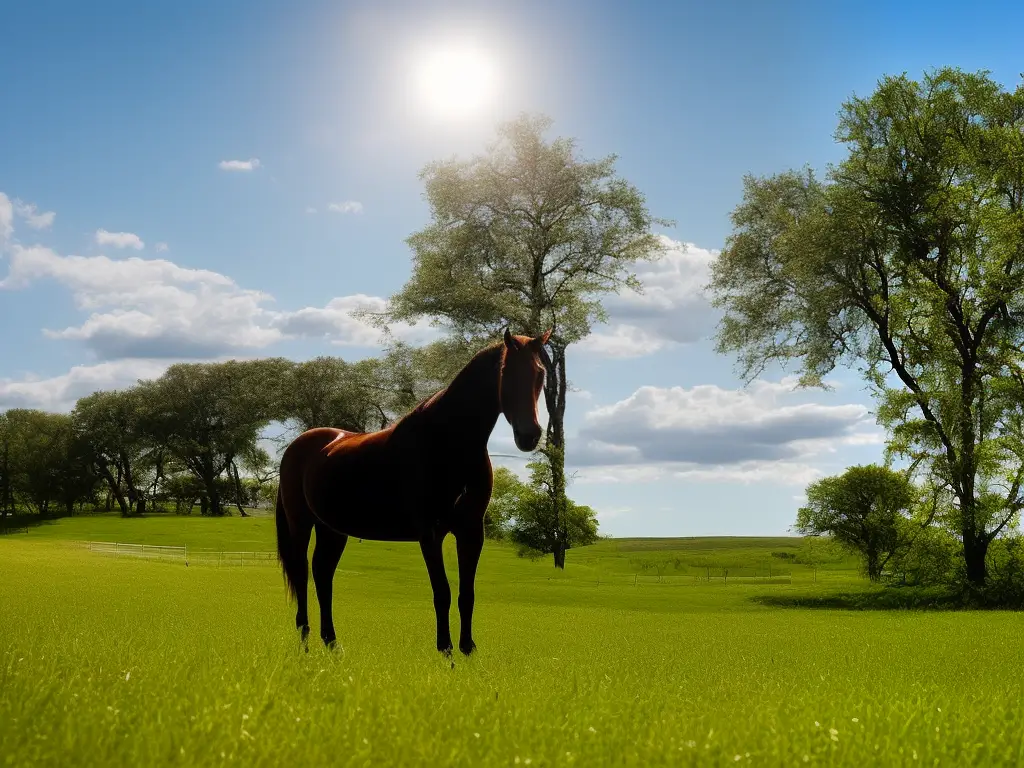
Buying and Owning an American Saddlebred
When looking to acquire an American Saddlebred, there are several options available to choose from, such as purchasing from a reputable breeder, adopting from a rescue organization, or bidding at an auction. Each avenue presents its own advantages and factors to take into account. As an American Saddlebred enthusiast, it is crucial to thoroughly research and evaluate every method before deciding on the most suitable way to welcome this majestic horse into your life.
Buying from a Reputable Breeder
Acquiring an American Saddlebred from a reputable breeder allows you the opportunity to learn more about the horse’s lineage, temperament, and training. Breeders often have a wealth of knowledge about the breed and can provide valuable insight into the care, maintenance, and training of the horse. When choosing a breeder, it is essential to look for one that is dedicated to producing high-quality horses with a strong commitment to the breed’s well-being. Visiting the breeder’s facility, meeting the horses, and requesting references from previous buyers can help ensure that you are working with a knowledgeable and ethical breeder.
Adopting from a Rescue Organization
Adopting an American Saddlebred from a rescue organization is another option to consider if you want to provide a loving home to a horse in need. Many horses found in rescue organizations have faced neglect, abuse, or abandonment and require a dedicated, patient owner who can help them recover and thrive. Adopting a rescue horse may come with some challenges, such as rehabilitation and additional training, but can be a rewarding experience for both horse and owner. It is crucial to work closely with the rescue organization to ensure the horse is a good fit for your specific needs and circumstances.
Purchasing at Auction
Attending an auction for American Saddlebred horses can offer a wide variety of horses at various ages, abilities, and prices. However, buying a horse at auction can be a riskier option, as these events often provide limited information on the horse’s history, temperament, and overall health. When considering purchasing a horse at auction, it is important to bring an experienced horse professional with you, such as a trainer or veterinarian, to assess the horse’s condition and suitability for your intended purpose.
To find the perfect American Saddlebred for your needs, it is essential to consider the horse’s temperament, age, and abilities when evaluating your options. Regardless of how you acquire your horse, be prepared to spend time getting to know it and seeking professional input on its suitability for your riding skills, goals, and lifestyle. By carefully considering these factors and making an informed decision, you can find an American Saddlebred that will be a wonderful companion and partner for years to come.
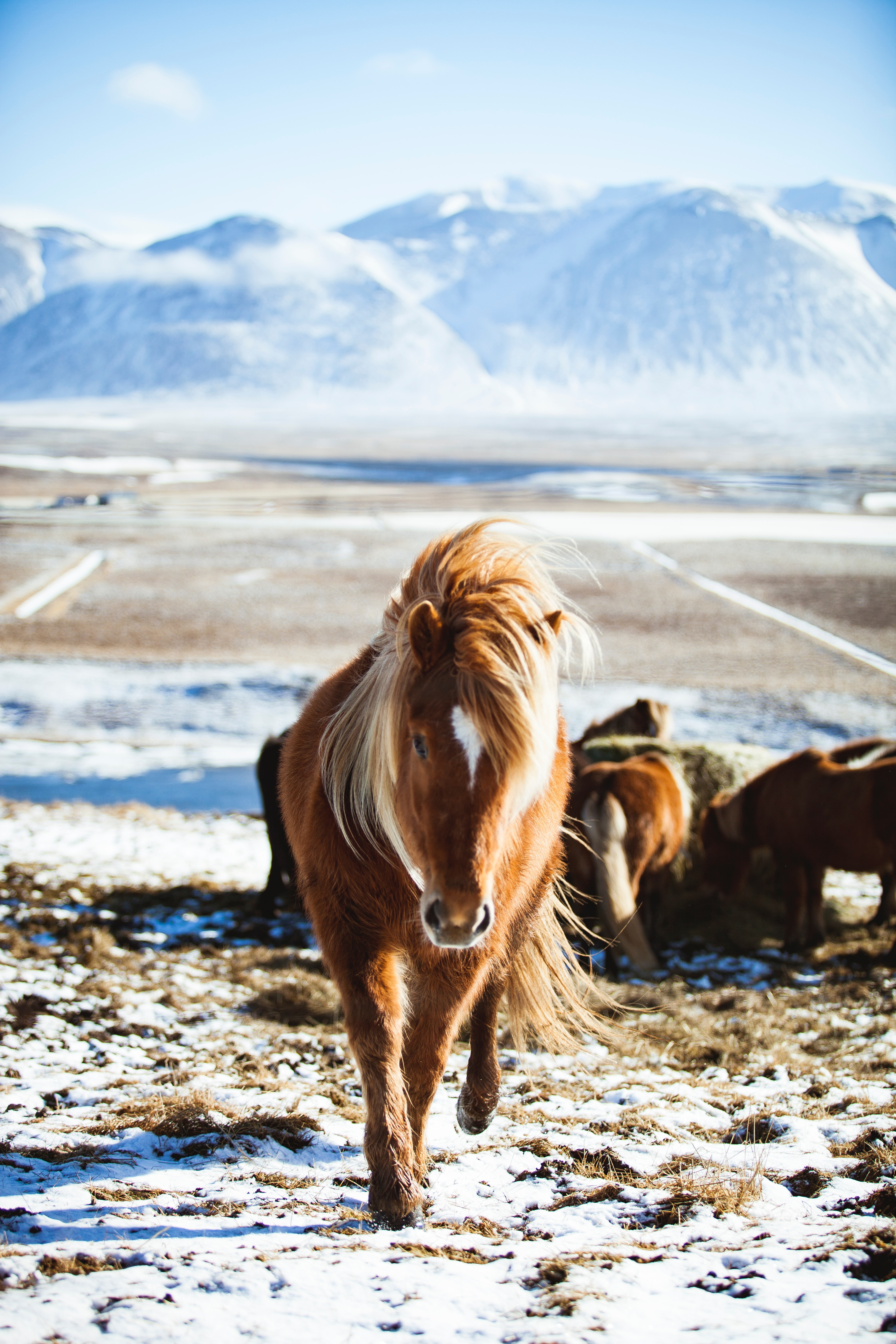
Photo by dominostudio on Unsplash
Famous American Saddlebred Horses and Riders
One of the most legendary American Saddlebreds in history, Wing Commander, serves as an excellent example of the breed’s characteristics. Foaled in 1943, Wing Commander was bred by Dodge Stables in Michigan and went on to become a six-time World’s Grand Champion due to his incredible talent, style, and unparalleled athleticism. Affectionately known as ‘Wingy,’ he was not only a dominant show horse but also a significant sire, with generations of championship-winning American Saddlebred horses among his progeny. This remarkable horse’s story underscores the importance of understanding and appreciating the unique qualities of American Saddlebreds when looking for the perfect horse to suit your needs.
Another notable American Saddlebred horse and rider duo was Belle Beach and her horse, My My, who made history in 1981 when they won the Five-Gaited World’s Grand Championship. Beach was the first woman ever to accomplish this feat, paving the way for future female riders in the industry. My My, who was renowned for his beauty and grace, helped to shatter gender barriers and stereotypes in the American Saddlebred world by showcasing his exceptional talent under the guidance of an equally talented rider.
In addition to Wing Commander and My My, Imperator also holds a special place in the memories of American Saddlebred enthusiasts. Imperator’s partnership with rider and trainer Don Harris was nothing short of legendary; together, they won the Five-Gaited World’s Grand Championship an incredible eight times from 1980 to 1989. Imperator was known for his effortless, fluid gait and regal presence, captivating audiences as he gracefully executed feats of athleticism and poise. He was truly one of the greatest show horses of all time.
Not only do male riders excel in the American Saddlebred world, but women have also made significant contributions. A prime example is Michele Macfarlane, who is considered an American Saddlebred icon. A tenacious and skilled rider, Macfarlane has won countless championships and awards on her notable horses, including Bravo Blue, CH It’s Hammertime, and CH The Foxy Prince. Macfarlane, a talented artist and an avid supporter of the arts, has brought a unique sense of style and flair to the American Saddlebred show world. Her presence, both in and out of the show ring, continues to shape the American Saddlebred community.
In recent years, Andy Freseth and the powerhouse mare, CH The Daily Lottery, have earned a place among the legends of American Saddlebred history. Freseth, a distinguished horseman and co-owner of Hollow Haven Farm, has guided The Daily Lottery to numerous championships and titles, including the 2018 Five-Gaited World’s Grand Championship. The magnetic and spirited mare has captivated fans with her grace, speed, and power, solidifying her place in the annals of the breed’s history. Their partnership continues to elevate the level of competition and excitement among fans and riders within the American Saddlebred community.
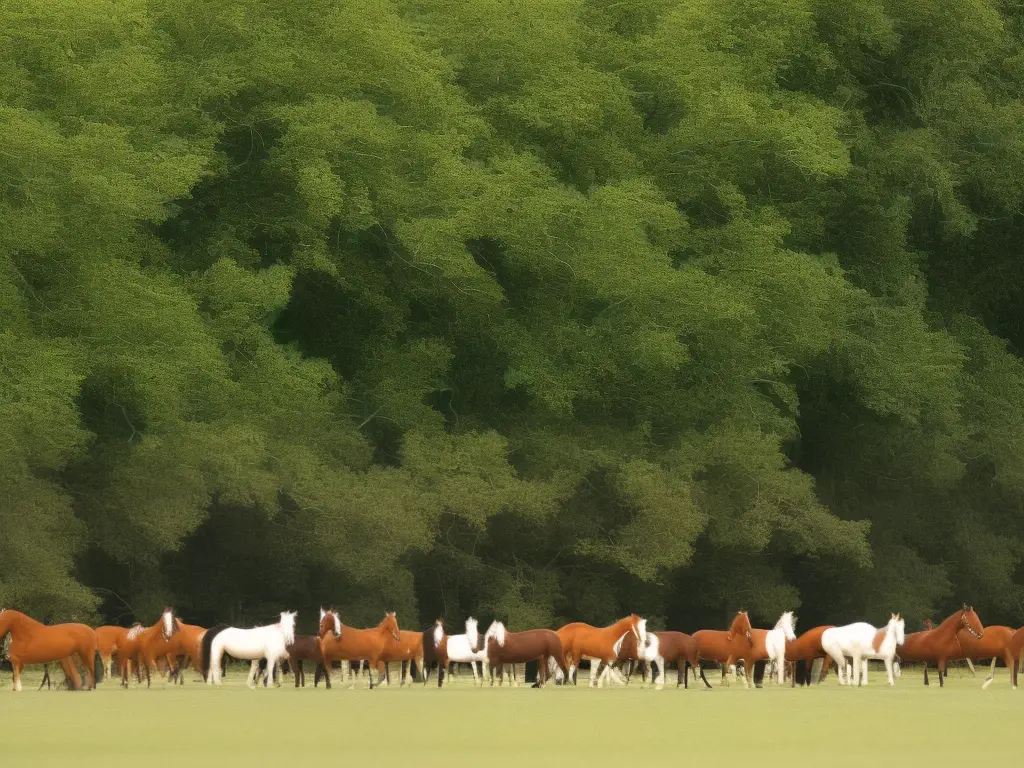
As we celebrate the American Saddlebred, we acknowledge not only its rich history and stunning characteristics but also the dedicated horsemen and women who have contributed to the breed’s success. Through adherence to proper care and training techniques, engagement in shows and competitions, and ongoing support from organizations and associations, the American Saddlebred community fosters an environment where both the horses and their human counterparts can thrive. By further exploring renowned horses and riders, we gain insight into the passion and commitment that drives the pursuit of excellence in this enchanting breed. The American Saddlebred undoubtedly holds an esteemed place within the American equestrian narrative, and its allure continues to resonate with horse lovers across the nation.